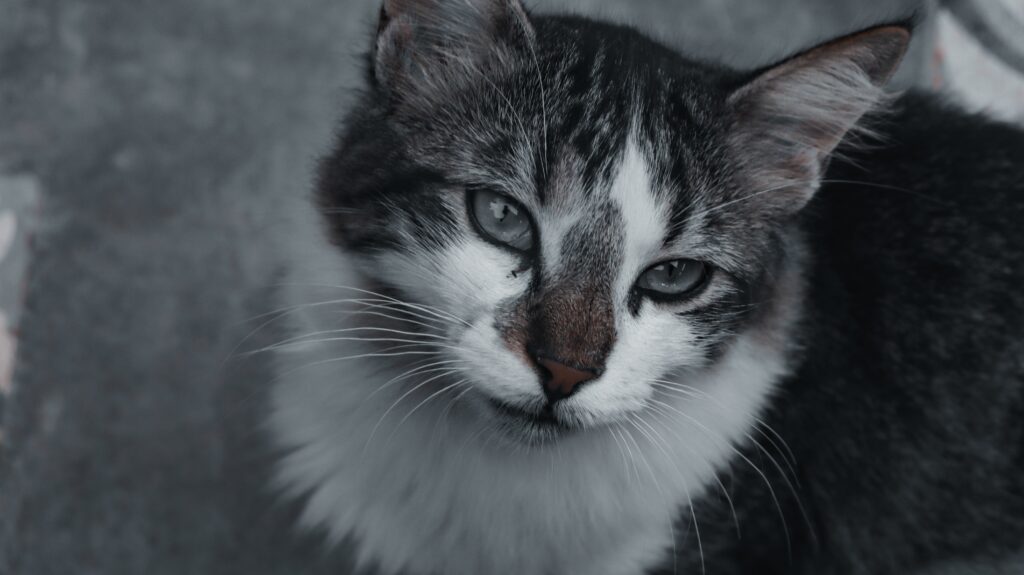Quinoa, a nutrient-rich grain originating from the Andean region of South America, has gained popularity as a health food for humans. However, its suitability as a dietary option for cats remains uncertain. Can Cats Eat Quinoa? Let’s find out.
While quinoa isn’t inherently toxic to cats, it should not constitute a substantial part of their diet. In moderation, well-cooked and plain quinoa may be safe for cats as an occasional treat. However, it should never replace the high-quality cat food specifically formulated to meet their unique nutritional needs. Understanding this balance is essential in providing the best diet for your feline friend.
This article aims to explore the nutritional value of quinoa for feline consumption, potential benefits it may provide in a cat’s diet, and any associated risks or concerns. By presenting evidence-based information and guidelines on introducing quinoa to a cat’s diet, along with alternative options for cats with dietary restrictions, this article seeks to inform cat owners about the feasibility and implications of incorporating quinoa into their pet’s nutrition regime.
Key Takeaways
- Quinoa is a high-protein grain that contains all nine essential amino acids, making it a nutritious option for cats.
- Cats may struggle to digest quinoa efficiently due to its high fiber content, and it can cause gastrointestinal upset.
- Some types of quinoa contain toxic compounds called saponins, which can be harmful to cats.
- Feeding quinoa to cats should be done under veterinary guidance and in moderation.
The Nutritional Value of Quinoa for Cats
The nutritional value of quinoa for cats can be evaluated by examining its macronutrient composition and potential contribution to essential amino acids, vitamins, and minerals in feline diets. Quinoa is a pseudocereal that is known for its high protein content. It contains all nine essential amino acids, making it a complete protein source for cats.
Protein is crucial for various physiological functions in felines, including muscle development and repair. In addition to protein, quinoa also provides carbohydrates, which serve as an important energy source for cats.
Quinoa is rich in vitamins such as vitamin E, B-vitamins (thiamine, riboflavin, niacin), and minerals like magnesium and phosphorus. Vitamin E acts as an antioxidant that helps protect cells from damage caused by free radicals. B-vitamins play a vital role in various metabolic processes within the cat’s body.
Furthermore, quinoa is a good source of dietary fiber. Fiber aids in digestion and can help prevent constipation in cats. It also promotes satiety and weight management.
Overall, incorporating small amounts of cooked quinoa into a cat’s diet can provide additional nutrients such as protein, vitamins, minerals, and fiber that contribute to their overall well-being. However, it is important to note that quinoa should not replace the primary sources of nutrition for cats but rather be offered as an occasional treat or supplement to their balanced diet.

Potential Benefits of Quinoa in a Cat’s Diet
Potential benefits of incorporating quinoa into feline nutrition include its high protein content, essential amino acids, and potential antioxidant properties. Quinoa is considered a complete protein source as it contains all nine essential amino acids necessary for feline health.
This makes it an attractive option for cats with specific protein requirements or those on a vegetarian or vegan diet. Additionally, quinoa contains antioxidants such as flavonoids and phenolic compounds that have been shown to possess anti-inflammatory and immune-boosting properties.
- High protein content: Quinoa provides a significant amount of protein compared to other grains commonly used in cat food.
- Essential amino acids: The presence of all nine essential amino acids in quinoa ensures that cats receive adequate amounts of these crucial nutrients.
- Potential antioxidant properties: Quinoa’s antioxidant properties may help support a healthy immune system and re4duce inflammation in cats.
While quinoa can offer several potential benefits to feline nutrition, it should be noted that cats are obligate carnivores and require primarily animal-based proteins for optimal health. Therefore, any incorporation of quinoa into their diet should be done under the guidance of a veterinarian to ensure nutritional balance is maintained.
Risks of Feeding Quinoa to Cats
Feeding quinoa to felines raises concerns regarding its digestibility and potential adverse effects on cat health. Cats are obligate carnivores, meaning their natural diet consists primarily of meat. While quinoa is a nutrient-dense grain that offers various benefits for humans, it may not be suitable for cats due to their unique dietary requirements.
Digestibility
One concern is the digestibility of quinoa in cats. Cats lack certain digestive enzymes required to efficiently break down plant-based carbohydrates like those found in quinoa. As a result, they may struggle to extract adequate nutrients from this grain, potentially leading to nutritional deficiencies.
Gastrointestinal Upset
Another concern relates to the potential adverse effects of feeding quinoa to cats. Quinoa contains high levels of fiber, which can be beneficial for humans but may cause gastrointestinal upset in cats. This can manifest as diarrhea or constipation and can lead to discomfort and overall poor health.
Toxicity
Moreover, some types of quinoa contain saponins, naturally occurring compounds that can have toxic effects on cats when consumed in large amounts. These saponins can irritate the gastrointestinal tract and interfere with nutrient absorption.
How to Introduce Quinoa to Your Cat’s Diet
To incorporate quinoa into a feline’s diet, gradual introduction and close monitoring of the cat’s response is recommended. Cats have specific dietary requirements, and introducing new foods should be done with caution to ensure their health and well-being. Here are some guidelines for introducing quinoa to your cat:
- Start with small amounts: Begin by offering a tiny portion of cooked quinoa as an addition to your cat’s regular meal. Monitor their response for any signs of digestive upset or allergies.
- Increase gradually: If your cat tolerates the initial introduction well, you can gradually increase the amount of quinoa in their diet over time. This allows their digestive system to adjust slowly.
- Observe for adverse reactions: Keep a close eye on your cat after each feeding. Look out for any symptoms such as vomiting, diarrhea, or changes in behavior that may indicate an adverse reaction.
While quinoa can be a nutritious addition to a feline’s diet due to its protein and fiber content, it is essential to remember that cats are obligate carnivores and require meat-based diets as their primary source of nutrition. Quinoa should only be offered in moderation and under veterinary supervision.
Quinoa Recipes and Treats for Cats
One approach to incorporating quinoa into feline diets involves utilizing various recipes and treats that contain this grain. Quinoa can be cooked and mixed with other ingredients such as chicken or fish to create a balanced meal for cats. For example, a recipe might involve boiling quinoa in water until it becomes tender, then adding cooked chicken and vegetables like carrots or peas. This mixture can be served as a main meal or used as a filling for homemade cat treats.
When preparing quinoa recipes for cats, it is important to ensure that the grain is thoroughly cooked and properly portioned. Overcooked quinoa may become mushy and unappetizing for felines, while undercooked quinoa can pose a choking hazard. Additionally, it is crucial to avoid using seasonings or additives that may be harmful to cats, such as onions or garlic.
While incorporating quinoa into cat diets can provide nutritional benefits, it is essential to consider alternatives for cats with dietary restrictions. Some cats may have specific health conditions or allergies that prevent them from consuming certain grains like quinoa. In such cases, alternative grains like rice or oats may be suitable options to ensure adequate nutrition without compromising their well-being.
Cats With Dietary Restrictions
An important consideration for cats with dietary restrictions is exploring alternative grain options that can provide necessary nutrition without compromising their well-being. While quinoa has been touted as a healthy grain option for humans, it may not be suitable for cats due to its high protein content and potential adverse effects on feline health. Fortunately, there are several alternative grains that can be considered for cats with dietary restrictions:
- Buckwheat: This pseudo-grain is a good source of fiber, vitamins, and minerals. It is gluten-free and can be easily digested by cats with sensitive stomachs.
- Oats: Oats are highly nutritious and contain soluble fiber that aids in digestion. They can be cooked or ground into a fine powder before being added to the cat’s diet.
- Rice: Both white and brown rice are easily digestible by cats and provide essential carbohydrates. However, it is important to ensure proper cooking to avoid any potential harm.
When introducing alternative grains into a cat’s diet, it is crucial to consult with a veterinarian to ensure they meet the specific nutritional needs of the individual cat. Additionally, observation of any adverse reactions or changes in behavior should prompt immediate reassessment of the chosen grain option.
How to feed quinoa to your cat
Feeding quinoa to your cat can be done occasionally and in moderation, as it can provide some nutritional benefits, but it should not replace their primary cat food. Here’s a detailed guide on how to do it safely:
1. Cook the Quinoa:
- Start by rinsing the quinoa thoroughly in a fine-mesh strainer to remove the bitter outer coating called saponin.
- In a saucepan, add 1 cup of water and 1/4 cup of quinoa. Bring it to a boil, then reduce the heat to a simmer.
- Cover the pot and let it simmer for about 15 minutes or until the quinoa is cooked and the water is absorbed.
- Remove it from heat and let it cool completely.
2. Portion Control:
- Cats have different dietary needs than humans, and quinoa should only be given as an occasional treat.
- Measure out a small portion of cooked quinoa, about a teaspoon to start. This should not exceed 10% of your cat’s daily caloric intake.
3. Mixing with Cat Food:
- To make it more appealing to your cat, mix the cooked quinoa with their regular cat food. Ensure it’s well-mixed and evenly distributed.
4. Observe Your Cat:
- After feeding quinoa to your cat for the first time, keep a close eye on them for any adverse reactions. Some cats may have digestive sensitivities or allergies to quinoa.
- If your cat shows any signs of digestive upset, such as vomiting, diarrhea, or refusal to eat, discontinue feeding quinoa immediately.
5. Nutritional Supplement:
- Quinoa contains protein, fiber, vitamins, and minerals, which can be beneficial in small amounts. It can be especially useful for cats on a homemade diet or those needing extra fiber.
6. Consult a Veterinarian:
- Before introducing quinoa or any new food into your cat’s diet, consult with your veterinarian. They can provide personalized guidance based on your cat’s specific dietary needs and health conditions.
7. Avoid Seasonings and Additives:
- Do not add any seasonings, salt, or other additives to the quinoa you feed your cat. Keep it plain and simple.
8. Monitor Hydration:
- Cats need adequate hydration. Ensure that your cat has access to fresh water at all times.
9. Variety is Key:
- While quinoa can be an occasional treat, it should not replace your cat’s balanced commercial cat food. Cats require a diet that is primarily based on animal protein, so make sure to provide them with high-quality cat food designed to meet their nutritional needs.
In summary, feeding quinoa to your cat can be done safely as an occasional treat, but it should not be a significant part of their diet. Always consult with your veterinarian before introducing new foods to your cat’s diet, especially if your cat has any underlying health issues or dietary restrictions.
Frequently Asked Questions
Can Cats Eat Quinoa as a Substitute for Their Regular Diet?
The suitability of quinoa as a substitute for a cat’s regular diet is uncertain. While it is a good source of protein and some nutrients, cats have specific dietary requirements that may not be met by quinoa alone. Further research is needed to determine its safety and nutritional value for feline consumption.
What Are the Potential Health Benefits of Feeding Quinoa to Cats?
The potential health benefits of feeding quinoa to cats include its high protein content, essential amino acids, vitamins, and minerals. However, further research is needed to fully understand its suitability as a dietary substitute for cats.
Is It Safe to Feed Quinoa to Cats With Dietary Restrictions?
The safety of feeding quinoa to cats with dietary restrictions or sensitivities is currently under investigation. Further research is needed to determine the potential risks and benefits for this specific group of cats.
How Should I Introduce Quinoa Into My Cat’s Diet?
When introducing quinoa into a cat’s diet, it is important to proceed cautiously. Gradually incorporate small amounts of cooked quinoa into their regular food, monitoring for any adverse reactions or digestive issues.
Conclusion
In conclusion, quinoa can be a beneficial addition to a cat’s diet due to its high nutritional value. It provides essential amino acids, vitamins, and minerals that promote overall health and well-being in cats. However, it is important to introduce quinoa gradually and monitor the cat for any adverse reactions or digestive issues. Additionally, cats with dietary restrictions may require alternative options that meet their specific needs. Consulting with a veterinarian is recommended before incorporating quinoa or any new food into a cat’s diet.


3 thoughts on “Can Cat Eat Quinoa: Everything You Need to Know”